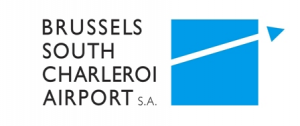Work begins to extend the runway

Charleroi, 8 May 2019 - Now that the site has been prepared, the work to extend Charleroi Airport’s runway has begun. SOWAER is coordinating the project, which will increase Charleroi Airport’s runway to 3,200 metres, taking it up to intercontinental level. 30 million Euros has been invested in the work. The flight range of planes will be significantly increased, which will contribute to BSCA’s development. More than 10 million passengers are expected by 2026, and over 1,500 jobs will be created. The work is set to be completed in 2021.
The Minister responsible for airports, Jean-Luc Crucke, is delighted to announce the start of work, which is set to enhance the future prospects of Charleroi airport: “This runway extension is an undeniable advantage for Charleroi airport, and will help it continue to grow and make this platform a real hub, capable of welcoming new kinds of airplane, with a longer range, offering BSCA’s users new destinations. The economic impact in terms of jobs will also be considerable.”
Laurent LEVEQUE, Chairman of the Board of Directors of Brussels South Charleroi Airport, announces: “Going from 2,550 metres to 3,200 metres will open the door to new prospects for our airport. In our development strategy, this extension will help us grow in two ways. On the one hand, new kinds of aircraft, with a longer range, will be able to take off from our tarmac, offering greater possibilities in terms of destinations. Airlines will also be able to optimise their flights by adding some cargo, as well as passengers. It is therefore essential that the airport continues to grow and we diversify our activities, so that we can take on a larger role on the international airport scene, whilst also consolidating our socio-economic role in the region.”
Above and beyond the impact assessment, SOWAER was keen to keep locals informed and consult them throughout the project, as Luc Vuylsteke, Chairman of its Management Committee, explains: “Many more local residents will see an improvement in the noise situation, as the airplanes will be taking off further along the runway. We publish the timetable for the work every week on our website. We are trying to do as much work as possible during the day rather than at night.”
To this end there was a calibration flight on 25 April, in order to determine the impact of some of the daytime work on the area of the building site nearest to the homes in Ransart.
The purpose of this flight was to show how, thanks to a number of precautions and procedures to be respected, the drainage work around the future retention basin can be done during the day. The outcome of this operation was positive, so some of the work planned to take place at night could now be carried out during the day. This will avoid noise pollution for the local residents living closest to this part of the site.


